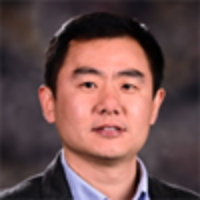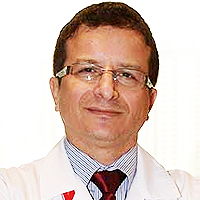Investigating Anti-Bacterial and Anti-COVID-19 Virus Properties and Mode of Action of Pure Mg(OH)2 and Copper-infused Mg(OH)2 Nanoparticles and Coated Polypropylene Surfaces
Published on: 29th May, 2024
Robust anti-microbial surfaces that are non-toxic to users have widespread application in medical, industrial, and domestic arenas. Magnesium hydroxide has recently gained attention as an anti-microbial compound that is non-toxic, biocompatible, and environmentally friendly. Here we demonstrate melt compound and thermally embossed methods for coating polypropylene with Mg(OH)2 nanoplatelets and copper-infused Mg(OH)2 nanoplatelets. Polypropylene articles coated with Mg(OH)2 nanoplatelets and copper-infused Mg(OH)2 nanoplatelets exhibit a log 8 kill of E.coli within 24 hours. In addition, Mg(OH)2 NPs suspension, at 0.25% reduced SARSCoV-2 virus titers in the solution by 2.5 x 103 PFU/mL or 29.4%, while the Cu-infused Mg(OH)2 NPs suspension, at 0.25% reduced titers by 8.1 x 103 PFU/mL or 95.3%. Fluorescence microscopy revealed that reactive oxygen species (ROS) are produced in bacteria in response to Mg(OH)2 and Cu-infused Mg(OH)2 nanoplatelets which appears to be an important but not the sole mode of anti-microbial action of the nanoplatelets. Plastics with anti-microbial surfaces from where biocides are non-leachable are highly desirable. This work provides a general fabrication strategy for developing anti-microbial plastic surfaces.
Investigate the Effect of Coating Concentration and Coating Thickness on the Anti-microbial Properties of Polycarbonate Sheet
Published on: 29th May, 2024
This paper investigates the effect of coating concentration (ppm), and coating thickness (µm) on the anti-microbial properties of polycarbonate sheets using a variety of anti-microbial agents (Cu-infused Mg(OH)2, Mg(OH)2, Cu(OH)2, MgO, CuCl2.2H2O, and ZnO). In addition, a complete analysis was performed for all agents to rank the best agent in terms of the highest anti-microbial performance against E. coli K-12 MG1655 in two time intervals (4 and 24 hours). The coating concentration (ppm) was found to be a significant factor in the anti-microbial characteristics for Cu-infused Mg(OH)2, Mg(OH)2, Cu(OH)2, MgO, CuCl2.2H2O, and ZnO (p = 0.004, p < 0.0001, p < 0.0001, p = 0.0297, p = 0.0011, and p = 0.0130 respectively). The coating thickness (µm), on the other hand, was found to be a major contributor to the anti-microbial properties of Cu-infused Mg(OH)2, Mg(OH)2, Cu(OH)2, MgO, and CuCl2.2H2O (p < 0.0001, p = 0.0004, p = 0.0011, p = 0.0310, and p < 0.0001 respectively). The analysis determined that the coating did not influence the anti-microbial properties of ZnO. The interaction between the coating concentration (ppm), and the coating thickness (µm) was found to be a significant factor for Cu-infused Mg(OH)2, Cu(OH)2, MgO, CuCl2.2H2O, and ZnO (p < 0.0001, p = 0.0001, p = 0.0004, p < 0.0001, and p < 0.0001 respectively), however, this was not a significant factor for Mg(OH)2.Highlights• The anti-microbial activity of the inorganic material is dependent on the particle shape and size.• Particles with sharp edges will provide additional physical injuries to the microorganisms.• Smaller particle size will provide higher surface area therefore better interaction with microorganisms.• The coating concentration and coating thickness will be crucial to the anti-microbial activity.• The thermal embossing techniques demonstrate good adhesion to the surface.
Relationship between Particle Size, Anti-Microbial Activity and Leachability of Copper Particles in Liquid Suspension and Compounded in Polypropylene
Published on: 29th May, 2024
Testing the antimicrobial efficiency of plastics with good precision and repeatability remains a challenge in the plastic industry, as commonly used standards can provide unreliable data. In this paper, we show that the “Bacterial Liquid Suspension Test” is a reliable method that allows for the measurement of antimicrobial activity of poor to very potent biocides. We used this technique to discriminate the performance of two Cu-based biocides, either in nanoparticle (NP) or macroparticle (MP) size, at three different loadings (0.02, 0.2 and 2 wt.%) in PP. With this technique, we also tested the antibacterial performance of PP as powders, pellets, and injection molded disks. As anticipated, the technique shows that both the increased loading and the smaller particle size showed higher antimicrobial activity than the larger particle size due to their increased surface area. Also, PP powders showed greater bacterial reduction than pellets and disks. While the PP with 2 wt.% Cu NPs showed the best antimicrobial performance, the detection of Cu at the surface (using SEM-EDX) and in the water leachate (using ICP-MS) were below the LODs, indicating their ability to kill bacteria.




